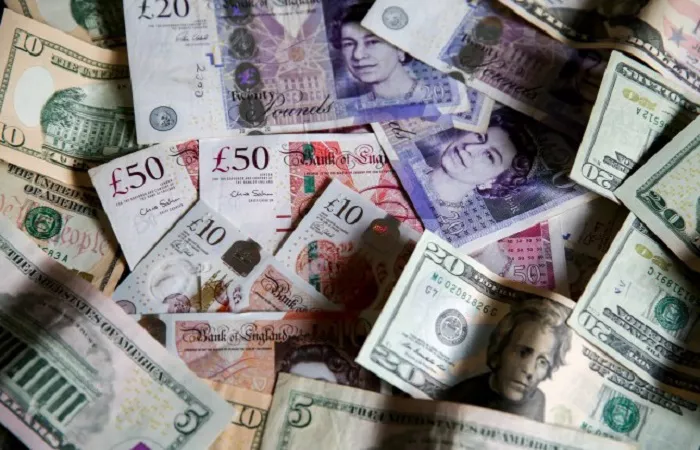The exchange rate between the British pound (GBP) and the US dollar (USD) is one of the most closely watched in the global foreign exchange market. As two major reserve currencies, fluctuations in the GBP/USD exchange rate can have far – reaching implications, not only for the economies of the United Kingdom and the United States but also for international trade, investment, and financial markets worldwide.
Understanding the Basics of the GBP/USD Exchange Rate
The GBP/USD exchange rate represents the value of one British pound in terms of US dollars. For example, if the exchange rate is 1.30, it means that one pound can be exchanged for 1.30 dollars. This rate is determined by the interaction of supply and demand in the foreign exchange market.
Supply and Demand Dynamics
Demand for Pounds: When US investors want to invest in the UK, whether it’s in British stocks, real estate, or businesses, they need to buy pounds. This increases the demand for pounds, driving up its value relative to the dollar. Similarly, if US consumers prefer British goods such as luxury fashion items, high – end automobiles, or fine wines, the demand for pounds will rise as they need to pay in pounds for these imports.
Supply of Pounds: On the other hand, when British investors look to invest in the US, they sell pounds and buy dollars. Also, when British exporters receive dollars for their goods and services sold in the US, they may convert those dollars back into pounds, increasing the supply of pounds in the market.
Historical Trends in the GBP/USD Exchange Rate
Over the past few decades, the GBP/USD exchange rate has experienced significant fluctuations.
Long – Term Trends
Post – Bretton Woods Era: After the collapse of the Bretton Woods system in the early 1970s, the GBP/USD exchange rate shifted from a fixed – rate regime to a floating – rate one. Since then, it has been subject to various economic, political, and market forces. In the 1980s, the pound faced downward pressure due to high inflation in the UK and the rise of the US dollar as a dominant global currency.
The Dot – Com Bubble and Aftermath: In the late 1990s, during the dot – com bubble, the US economy was booming, attracting a large amount of foreign investment. This led to an appreciation of the US dollar against the pound. However, after the bubble burst in 2000, the dollar lost some of its strength, and the GBP/USD exchange rate started to climb.
The Global Financial Crisis of 2008: The financial crisis had a profound impact on both the UK and US economies. Initially, the pound depreciated sharply against the dollar as the UK banking sector was severely hit. But in subsequent years, as the US Federal Reserve implemented aggressive monetary policies, the GBP/USD exchange rate showed some recovery.
Factors Influencing the GBP/USD Exchange Rate
Macroeconomic Factors
Interest Rates: Central banks play a crucial role in determining interest rates. The Bank of England sets the interest rates in the UK, while the Federal Reserve does the same in the US. When the Bank of England raises interest rates relative to the Federal Reserve, it makes British assets more attractive to foreign investors. As a result, they will buy more pounds, driving up its value. Conversely, if the Federal Reserve raises rates more aggressively, the dollar will strengthen against the pound.
Inflation: High inflation in the UK erodes the purchasing power of the pound. If the inflation rate in the UK is higher than that in the US, British goods become relatively more expensive, reducing the demand for UK exports. This can lead to a depreciation of the pound. On the other hand, if the US experiences higher inflation, the dollar may weaken.
Economic Growth: A strong economic growth in the UK can increase the demand for pounds. As the economy expands, there are more investment opportunities, and foreign investors are more likely to pour in capital. Similarly, a robust US economy can strengthen the dollar.
Political Factors
Domestic Politics: Political stability in both the UK and the US is crucial. In the UK, events such as general elections, changes in government policies, and Brexit had a significant impact on the pound. Brexit, in particular, created a great deal of uncertainty, leading to a sharp depreciation of the pound in the immediate aftermath of the referendum in 2016.
International Relations: Tensions between the UK and the US, or between either country and other major economies, can also affect the GBP/USD exchange rate. For example, trade disputes can disrupt the flow of goods and services, influencing the demand for both currencies.
Conclusion
The exchange rate between the British pound and the US dollar is a complex and dynamic phenomenon. It is influenced by a wide range of factors, including macroeconomic fundamentals, political events, and market sentiment. Understanding these factors is crucial for businesses, investors, and policymakers alike. While it is challenging to accurately predict the future movement of the GBP/USD exchange rate, a combination of fundamental and technical analysis can provide valuable insights. As the global economy continues to evolve, the GBP/USD exchange rate will remain a key indicator of economic health and a major factor in international trade and investment.
Related topics:
- Do Old Japanese Banknotes Expire?
- What is a Valid Japanese Currency?
- Current USD Exchange Rate: $800 USD in Australian Dollars


